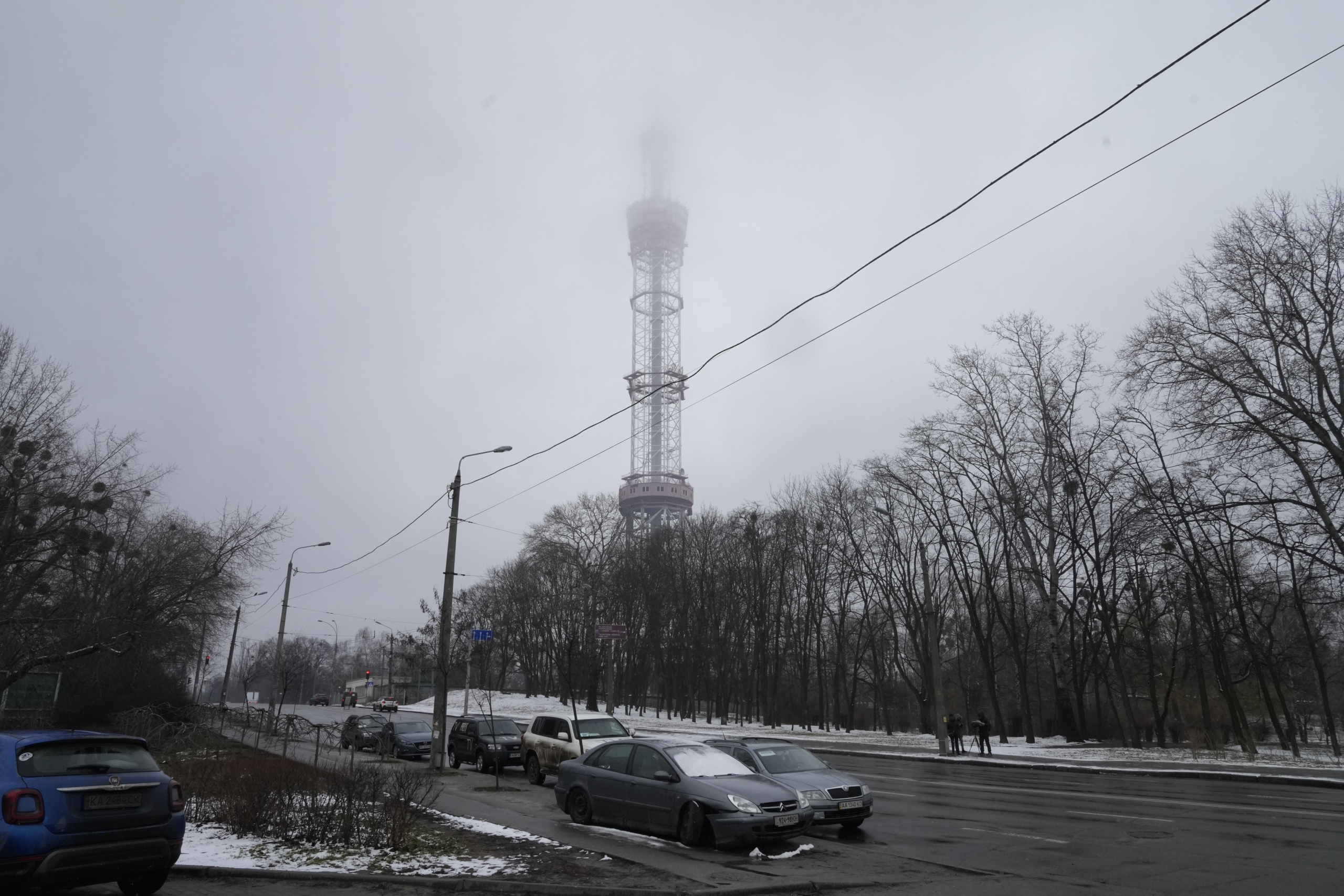Sign up for The Media Today, CJR’s daily newsletter.
On the eleventh day of President Vladimir Putin’s deadly invasion of Ukraine, the Tow Center spoke with Jakub Parusinski, a London-based Polish-Australian raising millions of euros to help Ukrainian media stay afloat as the country faces ongoing bombardment. We discussed the logistical challenges of supporting local, Ukrainian-based journalists from abroad, operational resiliency for newsrooms during wartime, and how this fits within the broader history of Ukraine’s turbulent post-Soviet history and press freedom challenges. At the time of publication–day 13 of Russian bombardment–more than 2 million people have fled Ukraine in what the United Nations High Commissioner for Refugees declared “the fastest growing refugee crisis in Europe since World War II.”
–
When the first Russian bombs hit Ukraine on February 24, 2022, Parusinski’s first thought was that the war would be a management and financial resources disaster for Ukraine’s news media. He formerly worked as a journalist in Ukraine beginning in 2009, first at a smaller publication, then at the Kyiv Post, where he switched to the business side. “Like any journalist who’s been kicked up to management, I didn’t really have an understanding of what good management looks like or what I’m supposed to do with a business model that is completely falling apart,” says Parusinski, who later left the Post to pursue an MBA at INSEAD. After a three year consulting stint at McKinsey in London, he returned to media to focus on news sustainability, becoming an expert on media management across north eastern Europe and some parts of central Asia. “It’s no secret that the business of news has been kind of devastated, and that hasn’t just been in the US, but the world over,” says Parusinski on his decision to return to the media sector. Now he’s a full-time media consultant and the CFO of the Kyiv Independent.
Parusinski, along with a consortium of organizations and volunteers, including The Fix, Are We Europe, Jnomics and the Media Development Foundation, immediately organized a GoFoundMe campaign to address their concerns as the deadly Russian campaign unfolded. (Parusinski helped found both Jnomics Media and The Fix in 2019. The Fix has “temporarily converted into a support hub for Ukrainian media” since the beginning of the Russian invasion.) The GoFundMe campaign dedicated to supporting Ukraine’s overall media sector, launched on February 25, 2022, has so far received more than 800,000 euros, while a separate campaign for the Kyiv Independent–a three-month old, English-language Ukrainian media outlet founded by journalists laid off from the Kyiv Post for defending editorial independence––has raised more than 1.2 million euros. (The Kyiv Independent’s GoFundMe was created in November 2021 when the publication first launched, although it’s received a huge spike in support since the war began.) Between the GoFundMe campaigns and direct payments to the consortium, about 2.8 million euros have been raised to support Ukrainian media.
The fundraiser is “just the tip of the iceberg” and only around five percent of what the consortium is dedicating its energy to, according to Parusinski. While they’ve started distributing emergency funds to around 15 regional and national Ukrainian media organizations for things like gas money and medical supplies, the consortium is mostly focused on keeping the country’s media afloat. “I would say our priority is not letting the independent, ethical Ukrainian media landscape die because rebuilding it would be very difficult,” says Parusinski. He also noted the critical role a strong media landscape plays in keeping a nation united during such harrowing times.
The first obstacle the consortium is facing involves sourcing supplies like personal protective equipment (PPE) and getting it into Ukraine. Parusinski quickly learned that being a good journalist or a good manager does not automatically make one a good wartime logistics operator. “It’s hard to figure everything out because you need somebody on the ground at every point to control everything you need and supply routes change,” he says, describing the situation as “total chaos in every direction.” They’re also in a race against the clock as they rush to get equipment to journalists in Kyiv before the city is completely surrounded by Russian forces. The consortium’s first shipments finally arrived in Kyiv on Sunday, although it took more than a week to get there. (Other organizations are also sending supplies for journalists into Ukraine, although Parusinski said many of these shipments were still days behind theirs.)
The consortium’s other main focus is on adapting newsrooms’ operations to wartime conditions. “It’s pretty clear you can’t run newsrooms the way you used to run newsrooms in Ukraine,” explains Parusinski, who says they’re working to decentralize operations so that entire newsrooms don’t fall silent if part of their infrastructure is attacked. The current plan is to create coordinated back offices across the European Union to take newsroom operations off the ground in Ukraine and transfer them to safe territories while maximizing newsmaking efficiency.
Ukrainian media organizations are having to adapt their business models quite significantly as they seek ways to survive. To Parusinski, this moment begs the question: If your audience is fleeing Ukraine and has lost everything, how do you build a longer-term subscription model on top of that?
Crowdfunding has been, by far, the largest financial boost for newsrooms within the last two weeks. The Kyiv Independent’s stratospheric rise can be partially attributed to how it positioned itself–“Ukraine but for a global audience”–which has attracted an outpouring of international donations and news features. Parusinski, who helps run the Kyiv Independent’s financial operations, says they’ve gained around 5,500 monthly donors on Patreon since the news site’s launch. The broader consortium has also recently created a Vault fundraiser called Keys for Kyiv, which allows supporters to buy keys using NFTs and cryptocurrency in exchange for exclusive content from three leading Ukrainian media companies–online newspaper Ukrayinska Pravda, digital broadcast station Hromadske, and weekly newspaper Novoye Vremya. It’s proved efficient for quickly getting money into newsrooms, especially with disruptions to digital payment processors across Eastern Europe.
The current wartime challenges facing Ukrainian media exist against the backdrop of steady, albeit fragile, free speech gains in the past three turbulent post-Soviet decades. The Maidan Revolution of 2014, and the subsequent Donbas War between Ukrainian government forces and Russia-backed separatists that has since killed 14,000 people, served as major turning points for enacting a series of press freedom and media reforms in the country. In September 2015, Ukraine adopted an “ambitious press freedom reform program” that included a law, signed by former President Petro Poroshenko, on “transparency of media ownership and the creation of an independent public broadcaster.” While these reforms marked progress for Ukraine, its government has been criticized for failing to enact the mechanisms needed to enforce the adopted legislation, the continuous underfunding of its public broadcasting sector, and the virtually nonexistent regulation of online media.
In a recent report on strengthening public interest in Ukraine’s media sector, Anna Korbut wrote that “the media environment in Ukraine is complex, diverse and competitive.” While many major Ukrainian media outlets remain under control by high profile, Kremlin-linked oligarchs that use their news properties for political influence, a small number of media organizations, mostly in print and online, have upheld “high standards of professionalism and integrity” that has proved vital for shaping domestic political and social debate, according to Korbut. While the most notable example of late is the Kyiv Independent, Korbut cites other established local independent outlets like the Lviv-based Tvoe Misto and the Kharkiv-based Nakipelo as continued examples of quality, public interest alternatives to commercial media in Ukraine.
While experts warned as recently as last year of the increasing threats against Ukraine’s free speech gains, such as competition from social media and tech giants as well as political turbulence from hostile actors, it was still considered one of “the freest media environments in the former USSR,” especially compared to neighboring countries like Hungary and Russia. Parusinski and others attribute the Ukrainian media’s resistance to censorship as a reflection of a national identity that has largely rejected authoritarianism and is fiercely democratic in its aspirations. “Ukraine has a vibrant civil society partly because it has vibrant journalism and vice versa,” explains Parusinski, which is precisely why he believes it’s so important for the media landscape to be so strongly safeguarded amidst the ongoing Russian invasion.
The wars and revolutions of the past decade prepared a large number of Ukrainian journalists for the current Russian invasion. However, the scale of the bombings and devastation is like nothing most local Ukrainian journalists have seen before, according to Parusinski, who believes the current moment “is really one of the great wars of the past 70 years only [one week] in.” This has left many journalists on the ground unprepared in terms of safety and is why the consortium has spent considerable time speaking with experienced war correspondents for advice. They’ve advised the consortium to send standard PPE, such as helmets, bulletproof vests, and emergency bandages, as well as some “crazier things” such as cigarettes, which often become a form of currency as wars stretch on.
As for whether Russian troops have been violently targeting journalists in the invasion’s early days, Parusinski has mostly seen local Ukrainian journalists attacked in the context of general civilians being fired upon. “It seems to me that it’s within the broader context of just absolute disregard for civilian life. I don’t think that makes it better but just different,” says Parusinski. So far, only one Ukrainian journalist’s death has been recorded–Yevhenii Sakun, a 49 year old camera operator for the television station LIVE, who was killed on March 1 when Russian forces shelled a television tower in Kyiv–although many are bracing for further attacks on media personnel. There have, however, been several reports of targeted attacks on international journalists in Ukraine. The Committee to Protect Journalists noted on its website that Russian troops shot at and robbed Swiss journalist Guillaume Briquet, who was clearly identifiable as press, while reporting in the Mykolaiv region. A crew of journalists from Sky News, a British television channel, were also shot at by what was characterized as a Russian “hit squad” fomenting terror in Ukraine while driving into Kyiv. And two Kyiv-based Danish correspondents filing dispatches for the Daily Beast suffered bullet wounds near the town of Okhtyrka, although it’s unclear which forces opened fire on them.
For now, enough money has been raised to get Ukrainian media through the first wave of the war. “It’s going to take a hell of a lot of coordination and a hell of a lot of creativity” to adapt to such an unpredictable situation, says Parusinski, who’s been working 18 hour days including weekends alongside colleagues, “but we’re building a solution that will help safeguard the media during the storm.”
Readers can find a comprehensive list of contributions and other support that the consortium has distributed at The Fix’s Ukraine Support page. Donations to the Ukraine media sector can be made through fundraisers set up on GoFundMe and the Vault.
Has America ever needed a media defender more than now? Help us by joining CJR today.





